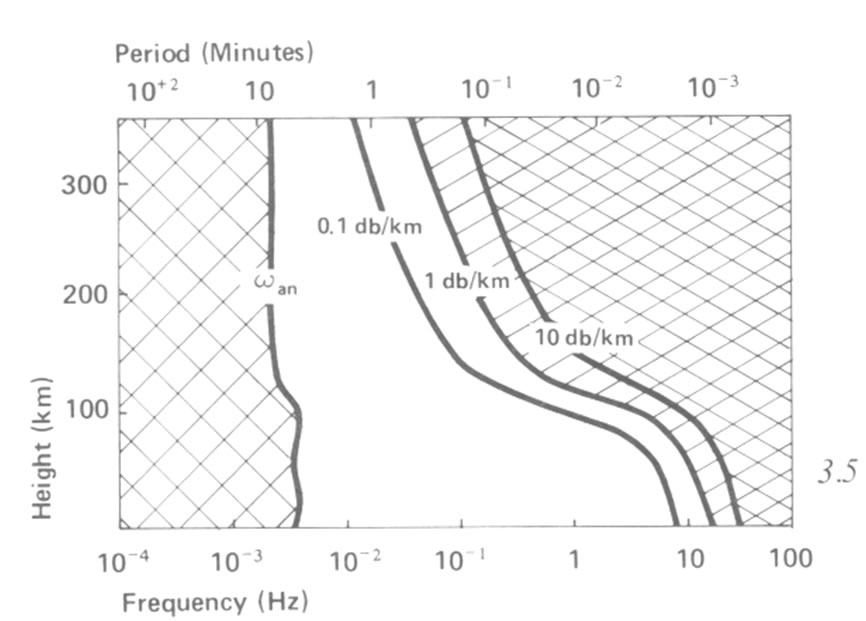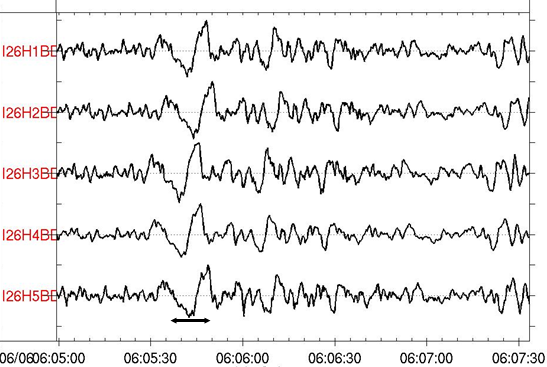Meteor Infrasound
Advantages and Capabilities of Infrasound monitoring for Bolide detection
Infrasonic waves have very low signal attenuation in the atmosphere. The diagram below (taken from Beer, 1974) shows the approximate attenutation as a function of frequency and height:

Figure 1. Attenuation of infrasound with frequency and propagation height in the atmosphere.
Infrasound detection is a robust, cost effective technology for detection of blast waves from bolides. It is possible to detect kiloton explosions at 2000-3000 km ranges, with global coverage for megaton explosions. If bolide infrasound signals are detected at two or more stations, it is possible to geolocate the source of the explosion as shown below for an event which occurred on August 25, 2000.

Figure 2. Map showing the intersection of infrasound bearings for a bolide occuring on August 25, 2000. The intersecting infrasound azimuth solution and the satellite-determined position are labeled. Only infrasound stations at Los Alamos (DLI), IS59 (Hawaii) and IS25 (Kourou, Guinea) (bold lines) had accurately determined azimuths.
As well, bolide infrasound signals have characteristic periods which may be related back to the source energy of the fireball. The signal amplitudes are affected by winds, source altitude and local turbulence effects. These signals also strongly decay with range; these may be used with appropriate calibrations as a cruder estimate of source energy. An example of an infrasound signal from a large bolide which occurred over the Mediterranean ocean on June 6, 2002 is shown below.

The bar shows the airwave associated with the bolide sweeping across the IS26 array in Germany, some 1800 km away.



